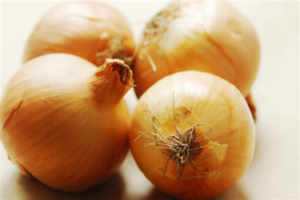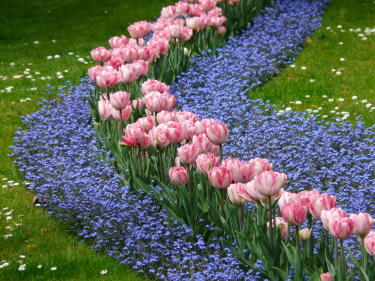
Forget-me-not flower care
Forget-me-not plants are kind of special plants. Its seeds can stay dormant in the soil for up to 30 years. They are known by most of the world as forget-me-nots. There are some people who call them ‘mouse’s ear’ due to its tiny size and its ear-shaped flowers.
Also, if you think about it, you might imagine beautiful blue flowers, however; you could find forget-me-nots in other colors as well. In fact, there has been pink, yellow, purple, and white flowers too (by breeding).
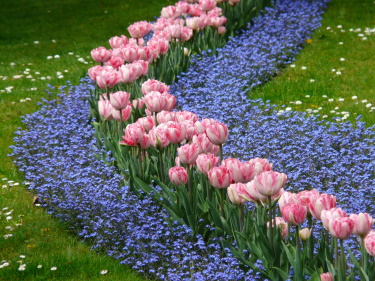
Such an elegant flower deserves high responsibility and effort in order to maintain its 5 petals and yellow centers in the best possible condition. Therefore, the first thing we need to know is when you should grow them. Which it is really easy: flowers explode from stems throughout summer and autumn (between May and October, more or less) if you sow them in early spring. If not, you will have to wait until next season.
Table of Contents
Forget me not plant care
‘Myosotis’ is the scientific name of this plant.
Two of the most common species are ‘Myosotis alpestris’ and ‘Myosotis palustris’. Let’s talk about the first one. It grows sometimes near to streams and rivers because of its high humidity levels. However, the second one looks for other conditions. If you want to grow it at home, you need to find dry atmospheres and sandy soils. Myosotis alpestris They’re a small plants, with typical heights of 5 inches to upwards of 2 feet. The (Myosotis sylvatica) generally grow to heights shorter then a foot.

Also, they are biennial plants, meaning that they bloom in the second year. They seed at this moment too. We need to watch this process out as they normally seed everywhere and may take over space for other plants.
You should fertilize them in spring and again in autumn if it is necessary. They do have pest issues so you can just focus on then most common powdery mildew: one of the most common reasons that end their lives. If this happens, you will notice how stems and leaves begin to turn a grey-color. Although, you can have more forget-me-nots in the same area by just leaving the plant there until autumn. They can spread their seeds and sow into the soil.
Ideal locations for growing forget-me-nots
The forget-me-not plant delights us with gorgeous flowers. Why not reward this effort by placing them where they can grow best? That is the next step after understanding how to grow and care for them.
If you like going for a walk in the country, you have probably seen millions of these flowers. This is because they love wooded areas and they take profit from the partial shades of the forest. And if you are a good observer, you probably have noticed that you never find them in small groups: they spread really quickly, so you should grow the forget-me-not plant in wide areas like your garden to let them spread freely.
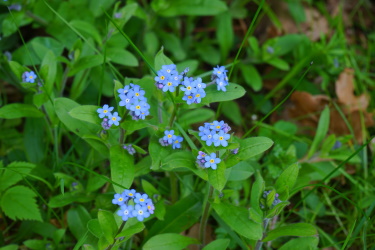
They also love to grow next to bog areas. They prefer wet soil with good drainage in both shady and sunny places just like a swamp as this is the natural habitat for many of them. They perform best in warm or cool areas so try to avoid places where the weather is really hot.
You can also help them grow by providing and preparing the soil with organic material and thus ensure that you will soon add color to your garden.
However, they are so versatile that sometimes they do not require such specific conditions and you do not need to meet all the proposed requirements: this means you could grow them mostly everywhere. As we said at the beginning of the article, first you need to distinguish between the different types of flowers in order to provide the best environment.
Forget-me-not in pots care
There are some other ways to grow your lovely flowers. One of them is the container: you can place it wherever you want, and taking care of your plant is even easier.
If you want to grow it in a pot, you should recreate the habitat conditions already described, and look for a spot where they will get both sun and shade.
This soil should be moist, but never soggy as forget me nots roots do not need a lot of water: it could be counterproductive and could end up drowning our beloved plant.
To avoid mildew, which usually kills forget-me-nots; you should provide them with enough space. Do not use a tiny flowerpot.

Once you have finished with the procedures before sowing the seeds, we need to move on to how you need to take care of them. So, you have likely thought that you need to water them frequently. And you are right. However, not too often because the soil could get soggy (water them less in winter as they do not get as many sunny hours as in summer).
If you find out that some of the flowers are dead, pinch them off to stimulate blooming next season.
Forget-me-not indoor care
The forget-me-not plant are very polyvalent flowers which make it possible to grow them almost everywhere. If you feel identified with this description, it may be a good decision to grow them indoors.
In that case, you should follow the advice proposed about pot care as it is our only option to grow them at home. In addition to those recommendations, we suggest specific measures for indoor care.
They will need good air circulation and do not forget about draining holes. A 12-inch-diameter container provides enough space to grow them.
A good place to leave them is south or east oriented windows because the plant will get full or partial sunlight.
Soil needs to feel dry when touched. To achieve this, you need to water its top 3 inches without letting it stand in water. And again, remove old spent flowers by pinching them off to encourage the formation of new blooms.
Although we have said it is not necessary to fertilize these types of plants, it would be a good idea to do it with indoor plants because they cannot receive all the benefits from the natural soil.
You can do this by mixing the fertilizer with a gallon of water and applying it instead of a water session. Do not do it during winter because plants are dormant. During this season you will need to trim off dead stems and foliage.
As you can see, indoor care requires more attention than a regular growing, but it is equally possible and satisfactory.
Forget-me-not leaves turning brown
When some parts of the forget me not plant begin’s to change its color, it is never good news. As we said, a common problem with forget-me-not is mildew, which makes stems become kind of yellow. However, what is the problem if leaves start to turn brown?
Well, brown leaves are normally a symptom of lack of water. In this case, excessive watering will not solve the problem: once leaves’ tips start to fall or turning brown, there is no way back.
Another issue that may guide to leaves turning black is fungal infections. One of the most relevant examples is a stunt, a plant disease caused by the ‘Entyloma fungus’. It leaves black spores on plants. Fortunately, it does not require fungicide as this type of infection can be solved by removing the contaminated plant from the others.
Finally, another common problem regarding forget-me-nots is when they get infected by insects. This time we have to talk about the potato flea beetle, which is a small and black flea bug that feeds upon potato and tomato leaves. Sometimes, this insect uses forget-me-nots leaves as well.
They eat small leaves circles, leaving round holes. These holes will make leaves to turn yellow, then brown, and then they will eventually die.
This beetle lives in winter near to rubbish and sheltered places.
When summer comes, they lay eggs in the soil (around June). The larvae feed upon roots of the forget-me-not plant. Ultimately, they become new beetles around July and they start injuring the plant. To control this, you might need to apply insect repellents in spring. Another option is a post i created on DIY pest control for a more organic approach.
Forget-me-not medicinal
As mostly every plant in the world, forget-me-nots are used for medicinal reasons. There are not many scientific investigations about this plant, so it is not recommended for pregnancy or people with health problems.
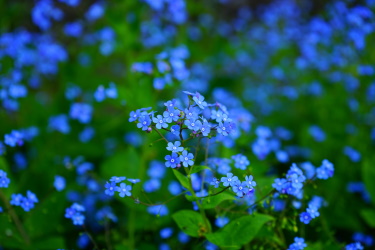
There is not any proof about what the doses of this plant should be. Normally, it is used to treat lung problems and nosebleeds. However, it might be unsafe because forget-me-not belongs to a particular family that contains ‘hepatotoxic pyrrolizidine alkaloids’. It is a dangerous and toxic chemical that can cause severe liver damage or even some type of cancer.
However, plant treatments are used in every country in the world. In this case, there have been good results when treating respiratory organs and pulmonary affections when it is made into syrup in continental countries.
Actually, its best results are related to the low left lung. There is even a ritual where a concoction or juice of the plant hardens steel.
Surprisingly (or not) you can eat forget-me-nots. If you have not used pesticides or other types of toxic products, you should consider adding these beautiful flowers to your next salad or use them as candied blossoms to give your food a special appearance (as you do when you grow them in your garden).
There are edibles, you must be concerned about: they contain low levels of ‘pyrrolizidine’, a toxic chemical that ingested in big quantities can cause health problems.
The safest type of forget-me-not plant is ‘Myosotis Sylvatica’: they will not cause any problems and they are secure for young kids and mascots too! However, there are some other types like the Chinese forget-me-not ‘Cynoglossum amabile’ (which is not a forget-me-not but it is very similar to them and they are easily confused) and the ‘Myosotis Latifolia’ specie. They are mildly toxic for some grazing animals and, if possible; it is highly recommended that humans should avoid eating them as well.


